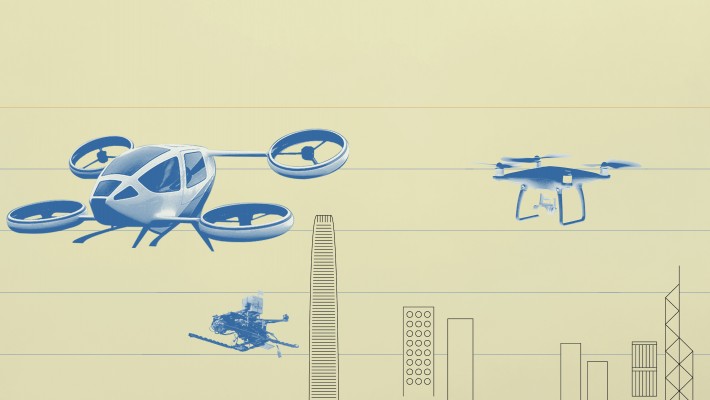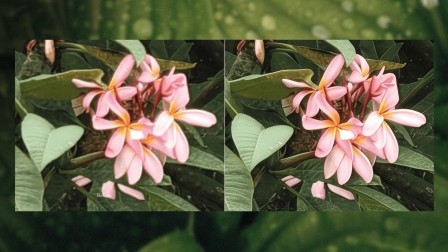Flying High in the Emerging Low-Altitude Economy
Pioneering technologies that will put Hong Kong at the forefront of an exciting new industry
With potential applications ranging from drone deliveries and flying taxis to aerial sightseeing and pesticide spraying, the burgeoning low-altitude economy (LAE) is set to revolutionise a host of important sectors, such as logistics, tourism, agriculture, and even emergency rescue operations.
The investment bank Morgan Stanley projects that the global LAE market will reach a staggering US$9 trillion (approximately HK$70 trillion) by 2050, transforming urban landscapes worldwide, unlocking new opportunities, and reshaping industries. Alongside Shenzhen and other Greater Bay Area (GBA) cities, Hong Kong is gearing up to be a leader in this global race.
Demonstrating its proactivity, the HKSAR Government established a dedicated working group in 2024 and launched the Low-altitude Economy Regulatory Sandbox in early 2025. PolyU is also playing a pivotal role in advancing LAE development in Hong Kong and the GBA through research, education, collaborations and technology transfer, thought leadership and policy recommendations.
Three things you need to know about LAE:
|
Guiding Hong Kong’s LAE strategy
PolyU’s Policy Research Centre for Innovation and Technology (PReCIT) is advising the HKSAR Government on amending existing or establishing new regulations to manage the LAE. For example, it has already suggested setting up an inter-departmental working unit to efficiently supervise LAE developments and encourage the involvement of businesses through favourable policies. Other ideas include creating a research and development centre focusing on low-altitude transportation technology.
The PReCIT also urged the Government to finalise the planning of the pilot LAE zone to facilitate the expansion of cross-border low-altitude transportation services. It has recommended drawing on Shenzhen’s LAE experience when developing the “Northern Metropolis” integrated living and economic region, and refining the SAR’s laws, regulations and development strategies to support low-altitude opportunities.
Pooling knowledge from experts and innovators
In addition to providing regulatory advice, PolyU scholars are spreading the word about Hong Kong’s capabilities throughout the wider LAE community. To promote collaboration and innovation, PolyU hosted the Aerospace Innovation Research Summit (AIR Summit) on campus in November 2024. The event brought together nearly 1,000 political and business leaders, researchers, and industry professionals from the aerospace technology and innovation sectors, to share their latest achievements, technological breakthroughs and ideas for innovative aerospace solutions.
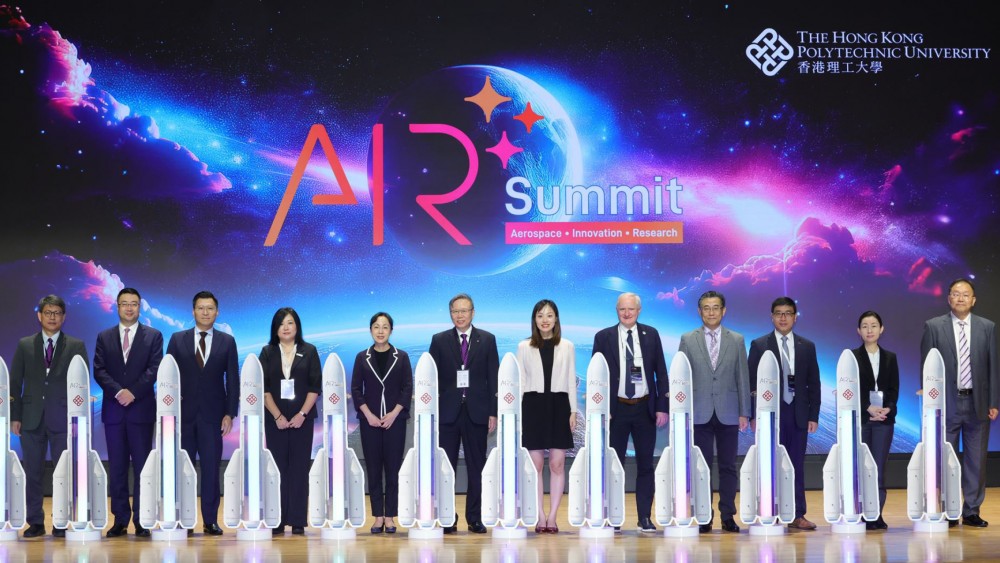
LAE was one of the five thematic sessions held during the AIR Summit in 2024.
To unlock the full potential of LAE, it’s essential to consider airspace regulations and guidelines, surveillance of the low-altitude airspace, infrastructure readiness, and public safety.
~ Professor Huang Hailong, Assistant Professor, Department of Aeronautical and Aviation Engineering
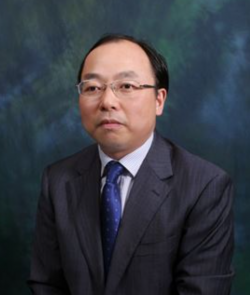
Collaboration between government departments, research institutions and the mainland authorities should be fostered to enhance the local capabilities in space weather services in support of LAE development.
~ Professor George Liu, Professor, Department of Land Surveying and Geo-Informatics Chief Scientist of Meteorological Observation Center, China Meteorological Administration
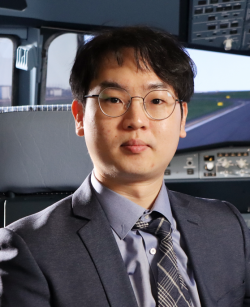
Land in the Northern Metropolis can be utilised to establish a research centre and a site for flight testing of unmanned systems, supporting use by various operating companies and universities.
~ Professor Ng Kam-hung, Assistant Professor, Department of Aeronautical and Aviation Engineering
Pioneering the new low-altitude frontier
The University demonstrated its commitment to LAE when it established the Research Centre for Low Altitude Economy (RCLAE) in 2024. Focusing on developing key technologies for low-altitude transportation and logistics, and ensuring efficient and safe use of airspace, the RCLAE aims to explore innovative solutions for transporting goods and passengers, and facilitate the transfer of technology from the lab to the commercial market. Like the PReCIT, the RCLAE is also advising the administration on policy decisions to support LAE growth in Hong Kong and the GBA.
One of the RCLAE’s most promising LAE initiatives is the Last-Centimeter Project, which uses transformative drones to deliver parcels directly to a customer’s balcony. The project features advanced autonomous navigation algorithms and integrates multiple sensor data to provide accurate 3D mapping of the surrounding environment. Achievements include an advanced drone prototype, capable of executing precision landings in challenging weather conditions and amidst obstacles, developed entirely in-house.
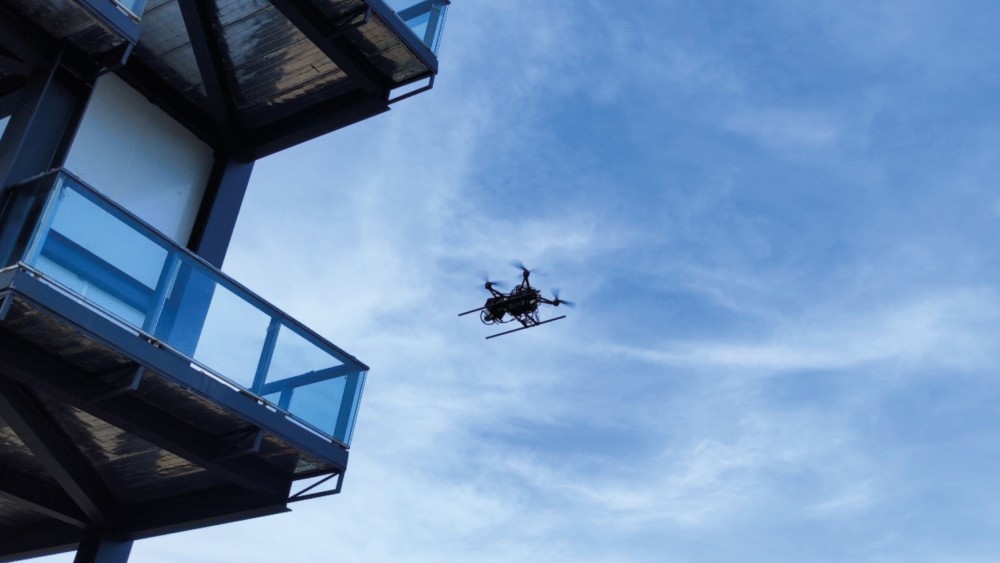
Led by Professor Huang Hailong, the Last-Centimeter project aims at enabling drones to autonomously navigate urban environments, and seamlessly deliver parcels directly to customers’ balconies.
The RCLAE is breaking new ground with its innovative use of autonomous drones to clean the exterior of buildings. Utilising LIDAR and GPS, the drones conduct detailed scans of target structures. The data collected is then transformed into accurate 3D models, enabling drones to plan the most effective cleaning routes automatically. Moreover, this innovative UAV system significantly reduces carbon emissions.
For example, cleaning a 100 m2 surface area of the windows of the PolyU Jockey Club Innovation Tower would emit 277.8 kgCO2e using large machinery commonly used by the cleaning industry, but only about 2.91 kgCO2e with the UAV system. The potential for even greater carbon reduction is promising as the project progresses towards completion.
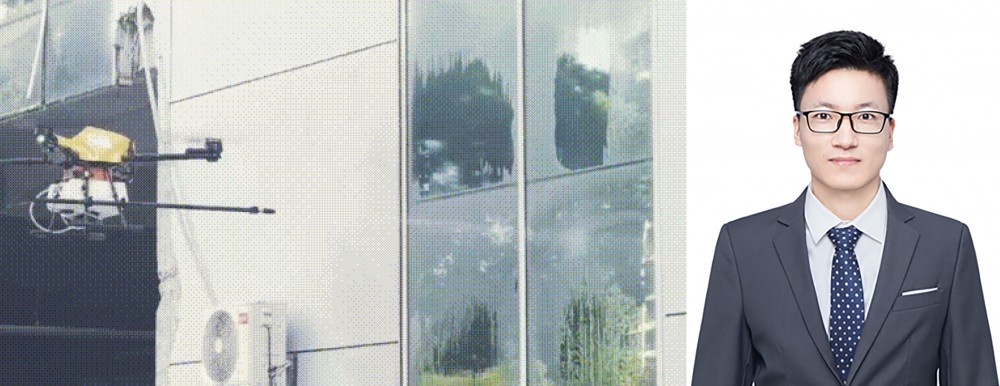
Professor Wen spearheaded the innovative project that employs drones to clean building exteriors.
Professor Wen Weisong, the visionary behind the project, believes
this nascent industry could potentially generate over HK$300M each year.
Many more LAE research projects led by top PolyU scholars are currently underway. These initiatives tackle a variety of issues, such as infrastructure planning, the design of low altitude airspace, and dependable perception techniques. The development of robust control technology, and the missioncritical consideration of ensuring safe flights in emergency scenarios, are also major research areas.
Click here to learn more about RCLAE.
Nurturing the next generation of LAE experts
PolyU secured its place at the forefront of LAE education with the launch of its Master of Science programme in LAE in September 2025. This interdisciplinary degree offers advanced training in airspace systems, design of U-space for unmanned aircraft system operation, aviation safety, and infrastructure design for next-generation aerial vehicles. The curriculum is designed to equip students with cutting-edge expertise in LAE, preparing them to become future leaders in a rapidly emerging industry.
According to Professor Huang Hailong, the programme has the potential to create numerous job opportunities across multiple sectors, including research and development, technical management, commercial, and public and government services.
Building industry networks
The University is actively pursuing collaborations with industry partners, including a partnership with the Greater Bay Area Low Altitude Economy Alliance (LAEA). This relationship aims to drive innovation, advance LAE practices, and promote academic research and technology transfer.
Recently, PolyU has signed a strategic cooperation agreement with China Tower Corporation Limited, the world’s largest telecommunications tower infrastructure service provider, for in-depth cooperation in areas including LAE.
Beyond laboratory research, the University is actively encouraging the practical application of LAE technologies to address societal needs. A notable example is the PolyU startup LifeSparrow Solutions, which harnesses a self-developed AI algorithm and drone imagery to locate lost hikers, reducing search and rescue time by over 65%.
PolyU is helping to position Hong Kong on the cutting-edge of the LAE revolution, through a comprehensive approach that integrates innovative research, talent development, strategic collaboration, and technology transfer. As the LAE sector continues to evolve, the University’s contributions will be instrumental in shaping a future where the sky is no longer the limit.



